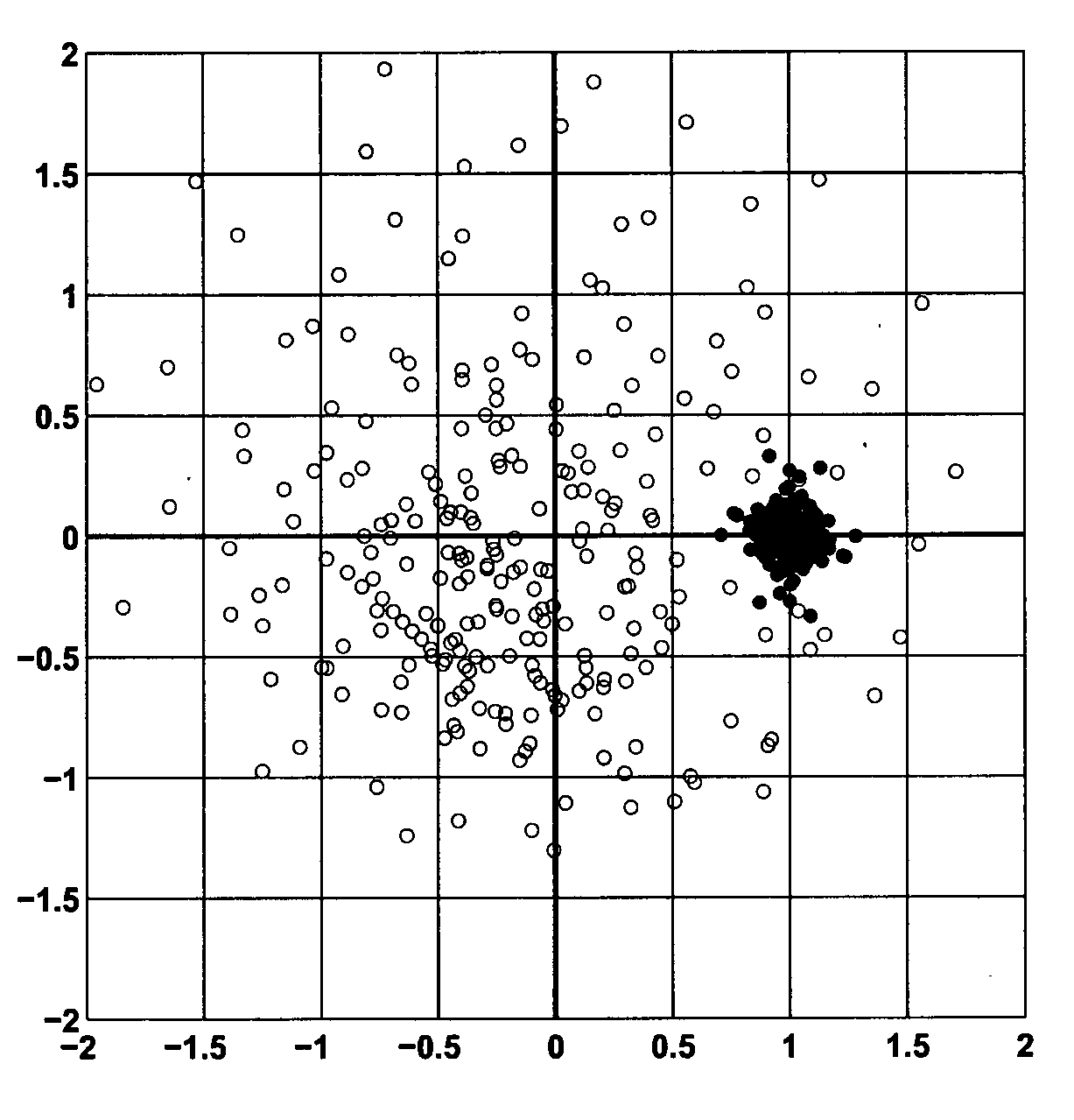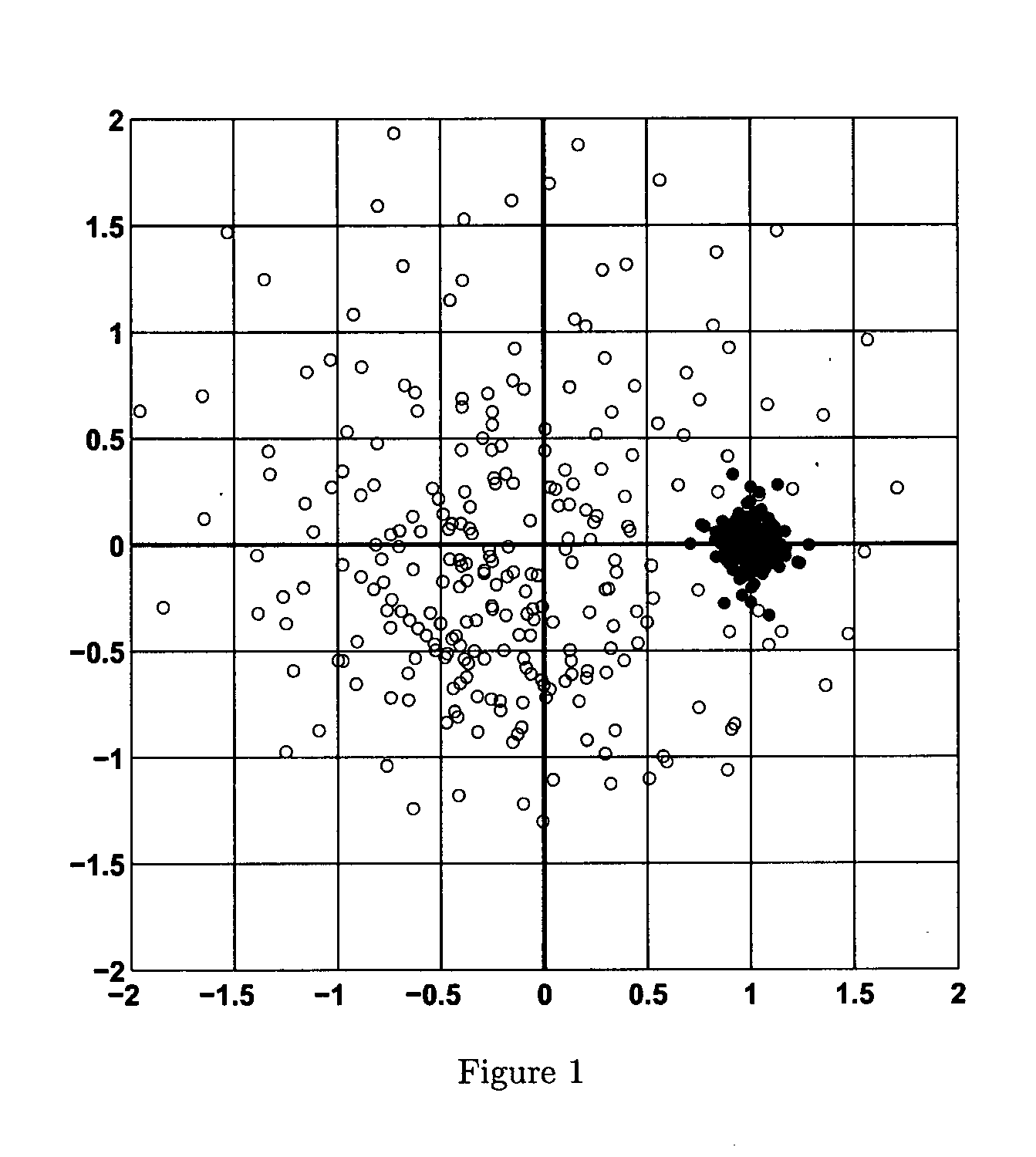Method for channel equalization
a channel equalization and channel equalization technology, applied in the field of channel equalization, can solve the problems of short symbol duration, significant intercarrier interference (ici), and require fast equalization algorithms
- Summary
- Abstract
- Description
- Claims
- Application Information
AI Technical Summary
Benefits of technology
Problems solved by technology
Method used
Image
Examples
Embodiment Construction
1 System Model
1.1 Transmission Model
[0061]The equalization method applies to any wireless transmission scheme as long as transmit symbols are sufficiently separated to avoid ISI, which is typically achieved by using a cyclic prefix (CP). CP-OFDM, SC-FDM are example transmission schemes with which this equalization method can be used. The equalization method is illustrated with a CP-OFDM system operating in doubly selective channels. An equivalent baseband representation of a single-antenna OFDM system with K subcarriers is considered. However, the method can be adapted to a MIMO setup in a straightforward manner. A sampling period of Ts=1 / B is used, where B denotes the transmit bandwidth. A cyclic prefix of length Lep is used in every OFDM symbol. Lcp is chosen so large, that LcpTs exceeds the channel's maximum delay, so that inter-symbol interference (ISI) is avoided. Consequently, throughout this paper only one OFDM symbol is considered at a time, and all further models and formul...
PUM
 Login to View More
Login to View More Abstract
Description
Claims
Application Information
 Login to View More
Login to View More - R&D
- Intellectual Property
- Life Sciences
- Materials
- Tech Scout
- Unparalleled Data Quality
- Higher Quality Content
- 60% Fewer Hallucinations
Browse by: Latest US Patents, China's latest patents, Technical Efficacy Thesaurus, Application Domain, Technology Topic, Popular Technical Reports.
© 2025 PatSnap. All rights reserved.Legal|Privacy policy|Modern Slavery Act Transparency Statement|Sitemap|About US| Contact US: help@patsnap.com



